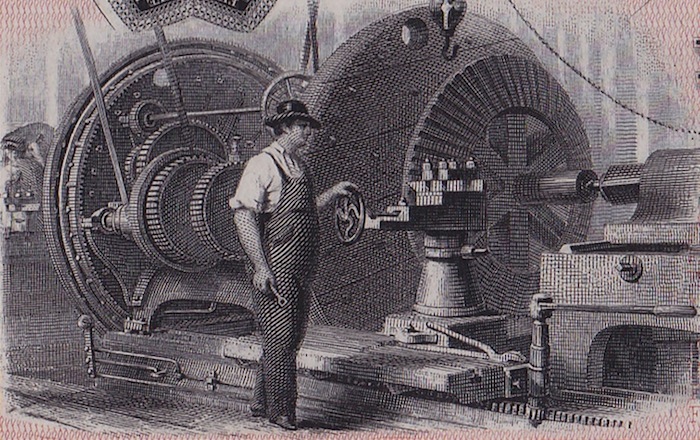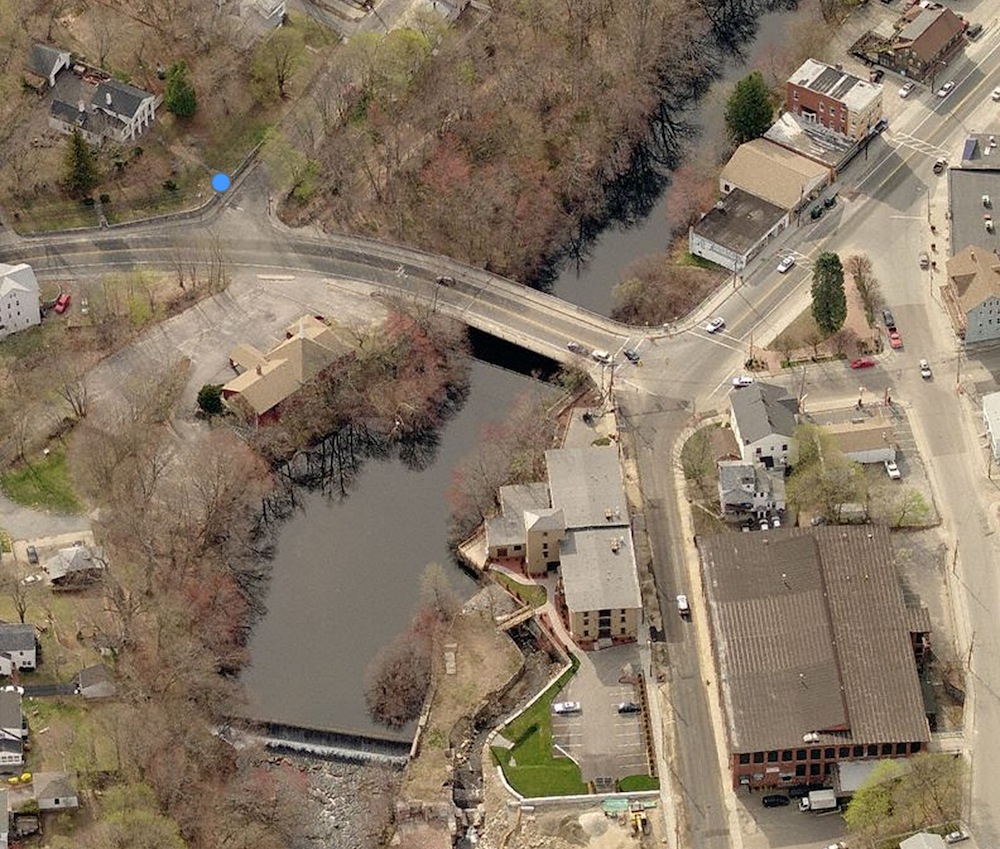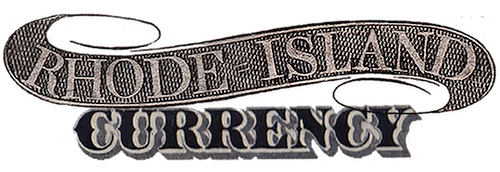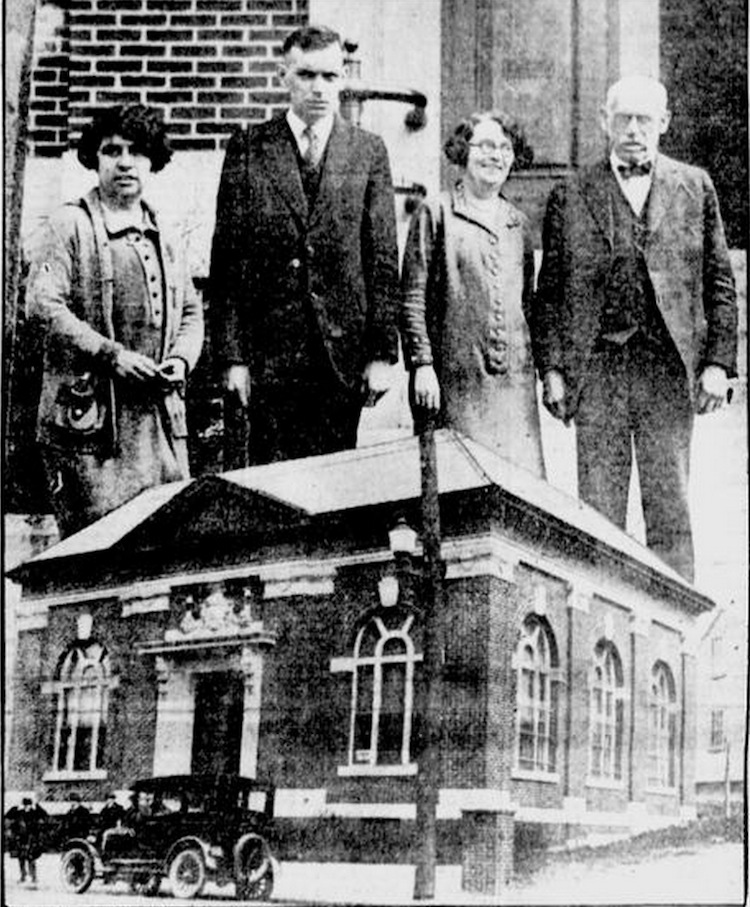Phenix Village Bank, Warwick
The Phenix Village Bank was founded in West Warwick by industrialist William B. Spencer in 1856. The locale’s name came from the Phenix Manufacturing Company, which was the primary employer in the area.
Spencer served as the bank’s first president and its $1 and $2 notes featured a vignette of his home. The scene is of Phenix Village itself and its river and waterfall that powered the local mill. At the far left is a Greek Revival house that Spencer had constructed in 1847 at 2 Ames Street (see a recent photo below). The portrait on all four notes below is believed to be that of Spencer himself. (He later constructed a home adjacent to the Greek Revival house which is now on the National Register of Historic Places.)
During the Civil War, when banks across the country joined the national banking system, this institution became the Phenix National Bank of Phenix, Rhode Island (charter #1460). It issued $335,500 in bank notes, all but $1,820 of which were recorded as redeemed by the Treasury by 1910. The National Bank Note Census does not show any of these notes existing today.
Other notable events in the bank’s timeline:
• 1858: William Spencer founds the Phenix Savings Bank and serves as its president for many years. It was closely associated with the Phenix Bank and occupies the same building.
• March 25, 1873: A fire destroys eight buildings in Phenix Village, including that of the bank. It causes $150,000 in damage.
• March 16, 1897: The Phenix Savings Bank fails. Depositors are owed about $150,000, while the bank’s liabilities are calculated at $414,000. In the Pawtuxet Valley Gleaner, cashier George E. Sheldon blames the failure on “hard times and the depreciation of the values in securities.” It will be at least another decade before depositors are repaid.
• January 6, 1899: “Cracksmen” set off two rounds of explosives in an attempt to rob the bank in the middle of the night. Because the vault is old and “sieve-like,” the force of the explosions is neutralized and the robbery fails.
• May 25, 1899: The Phenix Trust Company is incorporated. Within a year, the Phenix National Bank is liquidated and its assets are assumed by the new company, which commences business on August 30, 1900.
• 1915: Prolific Rhode Island architects, William R. Walker & Son of Providence, are commissioned to design a new home for the trust company in Phenix. (The building is torn down in the 1970s to make way for a Cumberland Farms.) (Click here to see the bank’s previous structure.)
• April 1, 1926: “Four agile bandits, members of a band of five, rushed into the Phenix Trust Company’s bank at Phenix this morning, shouted ‘Hands up!’ emphasized the command by the discharge of a revolver, then climbed over the grill surmounting the counter, handcuffed the cashier, his three assistants and a customer who had just entered the bank, picked up several packages of currency, aggregating between $22,000 and $24,000, fired a few more shots, put two telephones out of commission and made their get-away in a big blue Cadillac touring car.” — “Bandits Steal Over $22,000: Phenix Trust Co. Held Up By Five Daring Robbers Who Handcuff All In Bank.” The Evening Tribune, April 2, 1926.
The robbery is a major news story and, in the aftermath, much criticism is levied against the Rhode Island State Police, which had been created only a year earlier. It is their first major case. In the end, one robber named John “Whitey” Gilbert is caught and sentenced to 30 years. Two others go to trial but are acquitted with hung juries.
• December 13, 1927: George E. Sheldon, secretary-treasurer of Phenix Trust, kills his wife and then commits suicide. He had been with the company for over 30 years.
• April 23, 1929: Daniel Howland, who is referred to as the president of the Phenix Trust Company, commits suicide at his home in East Greenwich. Howland was also president of the East Greenwich Town Council. His father, Richard Greene Howland, had served as president of Phenix Trust. (I have found only one reference to Daniel Howland being the president of the company, though there are many mentions of him being a director for over a decade.)
• April 30, 1930: Phenix bank robber John “Whitey” Gilbert makes a brazen attempt to escape the State Prison at Howard. One guard and two prisoners are killed. Gilbert is shot but survives.
• June 1, 1946: Phenix Trust is liquidated and the Industrial Trust Company of Providence takes over the company’s assets. The institution’s former building becomes the Phenix branch of Industrial Trust.
There are two other banks in Rhode Island with similar names: The Phenix Bank of Westerly and The Phenix Bank of Providence.





Detail of the vignette.

An aerial view of Phenix Village today (from Bing Maps) shows the falls at bottom and the Spencer’s Greek Revival house at top left.

